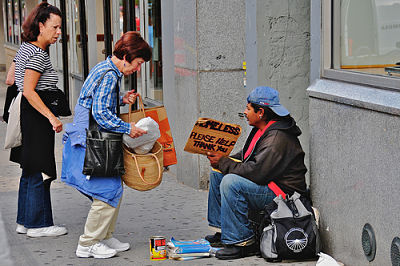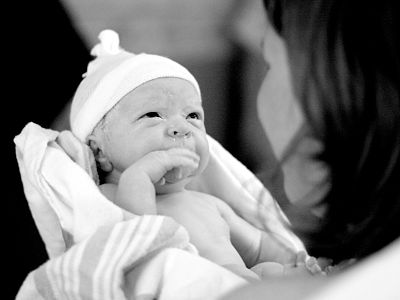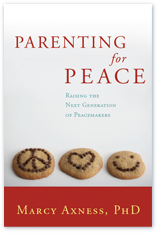The subject of empathy — and whether it’s an endangered trait — has been on many people’s lips and pens in the wake of unspeakable events in the past several weeks, on US soil and US-occupied soil. As Steve Taylor wrote in Psychology Today,
To a large extent, all human brutality – all oppression, cruelty and most crime – is the result of a lack of empathy. It’s a lack of empathy which makes someone capable of attacking, robbing, raping or oppressing another human being. It’s a lack of empathy for another tribe or country which makes warfare and conflict possible. It’s a lack of empathy towards other ethnic groups, social classes or castes which makes oppression and inequality possible.
A lack of empathy toward an ethnic group or a social class doesn’t spring full-blown from the head of anyone, but rather, can trace its bitter little roots back to a lack of empathy towards other individual humans… and even before that, to a missed opportunity to learn empathy the only way we really learn it: by living it on the receiving end in our earliest years of life.
 Empathy is more than the garden variety definition of being able to “walk in the shoes of another”: as Taylor points out, “It’s the ability to make a psychic and emotional connection with another person, to actually enter into their mind-space.” The past dozen years of research in the new field of interpersonal neurobiology shows us that this literally does happen during attuned, face-to-face, skin-to-skin episodes of connection between parents and children, beginning when they’re newborns.
Empathy is more than the garden variety definition of being able to “walk in the shoes of another”: as Taylor points out, “It’s the ability to make a psychic and emotional connection with another person, to actually enter into their mind-space.” The past dozen years of research in the new field of interpersonal neurobiology shows us that this literally does happen during attuned, face-to-face, skin-to-skin episodes of connection between parents and children, beginning when they’re newborns.
Twentieth-century poet Rainier Maria Rilke said it so perfectly, you’d think he had a degree in this twenty-first century science: “Face to face with you, I am born in the eye.” That, in a nutshell, is what happens in the parent-child connection. The baby needs us to really see her, for it is within that gaze that truly miraculous things happen — including the tender beginnings of empathy, as parent and child actually share states.
And, central to empathy’s roots, the baby is mirrored. It was famed pediatrician and psychiatrist D.W. Winnicott who said, “The baby’s first mirror is the mother’s face.” It’s from the expressions on his mother’s face that a baby experiences, “Ah, I’m delightful, I’m wonderful, I’m worthy of love” — not at first in words, of course, but in the elixir of pleasure hormones that flows when Mama responds in an attuned way to his cues. This is how he begins to put together a “self” for himself. When the intimacy of the attuned, adoring gaze is missing, a person can go through life unceasingly seeking that missing mirroring — in eliciting admiring looks or praise from others, in being perfect, in being a people pleaser, in countless fruitless ways of attempting to fill up the space left by not having been “sufficiently adored at the proper time,” as Nancy Friday so aptly put it.
The depth of seeing that takes place in a securely connected interaction goes beyond what the eyes exchange. When a parent is responsively attuned, he or she communicates to the child, “I see all of you, even on the inside.” And more than that, “I share what you’re experiencing.” Daniel Siegel distills it into the rather lyrical notion of feeling felt. The early experience of feeling felt by an attachment figure is a foundation for the child’s developing capacities for empathy, compassion and true intimacy.
School Age is Too Late to Begin
There are many excellent conflict-resolution and anti-bullying programs in schools around the country, and one of the most extraordinary is the Roots of Empathy, in large part, I believe, because of how brilliantly it engages a young child with their own feelings of caring and being cared for:
I do agree, though, with Craig and Marc Kielburger, who wrote on Sunday in Canada’s Chronicle Herald, “If we’re serious about stopping bullying, it has to start in the home. There are ways parents can blindside bullies long before they reach the schoolyard.”
It reminds me of the great UC Berkeley biologist Marian Diamond’s caution, “If we’re putting millions of dollars into Head Start, which begins at three, four, or five years of age, and haven’t developed the appropriate brain to receive that education, it will be a waste of money. It is important to be sure that the brain has developed well in utero. So when you start with formal education, you have the nerve cells and the dendrites that can respond.”
In order for students to respond deeply and vibrantly to such innovative programs as the Empathy Experiment at Ohio’s Capital University, the foundation needs to have been laid many years earlier. Though I’m not a huge fan of comparing the endlessly mysterious dynamism of humans to the workings of computers, it’s sort of like having an awesome software program or app — it can only work well on hardware that’s built for it!
This means enveloping the infant, the toddler, the preschooler (and indeed, the child at all ages, into the teen years) in the emotional warmth he needs — which includes mirroring, kindness and the security of being supported and nurtured with all of his individual needs, fears and dependence. And then as if by magic, usually imperceptibly but sometimes overnight, he will organically outgrow the childish expressions of those needs, fears and dependencies — not because he had to repress or deny them, but because he will have internalized the healthy capacities for regulating them within his own being.
We can only extend ourselves into feeling and tending to the needs of others when we have our own inner care and tending well in hand.
In an upcoming post I will explore the critical connections between shame, empathy and the roots of conscience.
Sources:
Steve Taylor. March 24, 2012. “Empathy: The ability that makes us truly human.” Psychology Today.
“Roots of Empathy” YouTube
Craig and Marc Kielburger. March 25, 2012. “Empathy is the antidote to bullying.” Chronicle Herald.
Erik Leake. July 11, 2011. “Teaching empathy to the ‘me’ generation.”
Images:
Ed Yourdon under its Creative Commons license
Lisa Pflaum used with permission
by Marcy Axness, PhD, author of Parenting for Peace: Raising the Next Generation of Peacemakers
Tags: attachment, empathy, interpersonal neurobiology, violence


